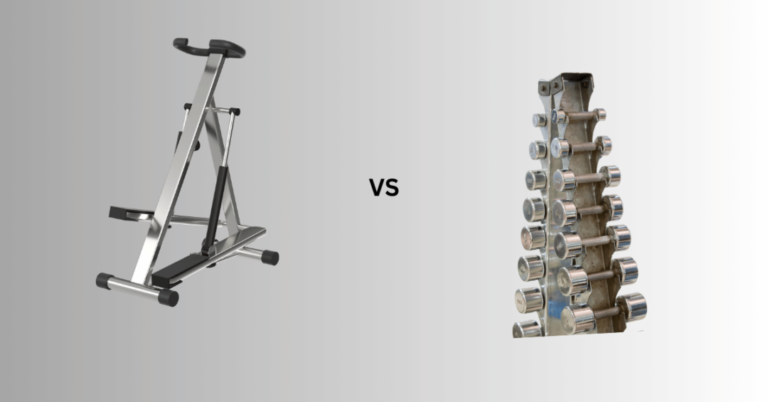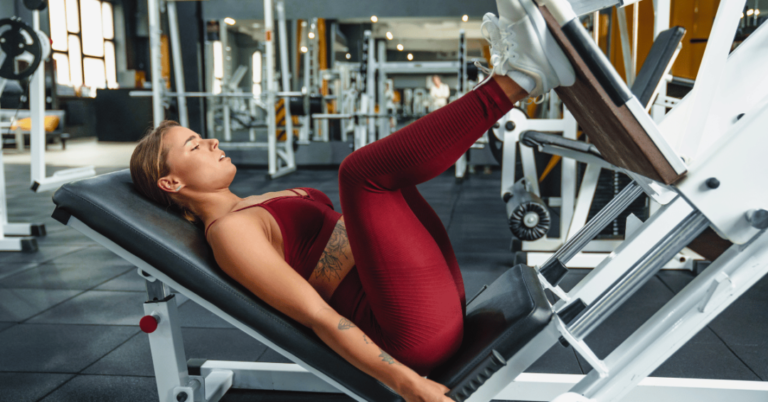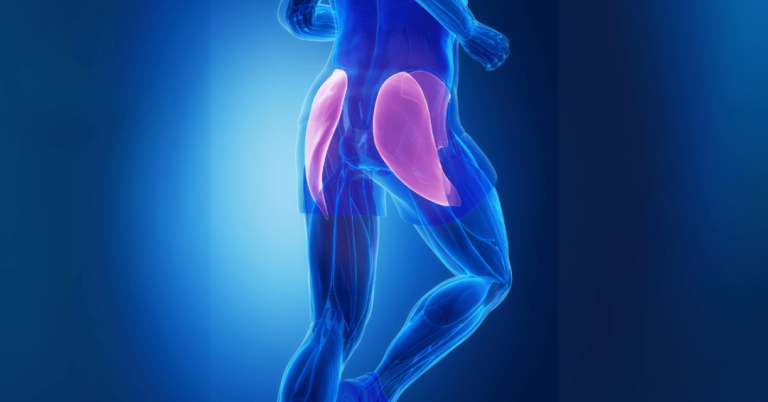Explosive Plyometrics: Best Plyometric Exercises Workout
Some links on this page are affiliate links (including Amazon Associate links) which means that, if you choose to make a purchase, we may earn a small commission at no extra cost to you. We greatly appreciate your support!

Plyometrics Training Explosive Movement Results: Best Plyometric Exercises Workout
Plyometric exercises are the secret weapon for individuals looking to supercharge their weight loss journey and athletic performance. These high-intensity, explosive movements not only burn massive calories but also build lean muscle, improve coordination, and elevate your metabolic rate. Whether you’re a fitness beginner or an advanced athlete, plyometrics can revolutionize your workout routine and help you achieve incredible results faster than traditional exercises.
What Are Plyometric Exercises?

Definition of Simple Plyometric Training
Plyometric training involves rapid stretching and contracting of muscles to produce maximum force in the shortest time possible. This process, known as the stretch-shortening cycle (SSC), helps improve power and agility. Common plyometric exercises include jump squats, box jumps, and burpees, all of which challenge your body to generate explosive energy quickly.
Adding plyometric exercises can help enhance athletic performance, but it’s also a fantastic way to boost metabolism and burn calories. Because it engages multiple muscle groups and demands a high level of effort, plyometrics is a great tool for weight loss and fitness improvement.
How Plyometrics Differ from Traditional Strength Training
Traditional strength training focuses on controlled movements with resistance, such as lifting weights or using machines. This type of training builds strength over time by progressively increasing the load on the muscles. While important for muscle development, they don’t necessarily improve the speed and explosiveness of movements.
Plyometric exercises, on the other hand, emphasize quick, intense bursts of energy. Instead of slow, controlled movements, you rapidly jump, hop, or push off the ground. This creates a different type of muscle activation, training your body to generate power more efficiently. While strength training helps build muscle size and endurance, plyometrics enhances speed, agility, and calorie burn.
The Physiological Mechanisms Behind Explosive Movements
Plyometric movements rely on the ability of muscles and tendons to store and release energy quickly. When you lower into a squat before a jump, your muscles stretch like a rubber band. As you push off the ground, that stored energy releases, launching you upward. This combination of elasticity and force production makes these exercises highly effective for building power and strength.
Additionally, plyometrics strengthens the nervous system, improving coordination and reaction time. The constant activation of fast-twitch muscle fibers boosts overall athletic performance and increases calorie expenditure, making it a powerful tool for weight loss.
Benefits of Plyometric Exercises for Weight Loss and Muscle Development
Adding plyometric exercises to your routine is one of the most effective ways to torch calories and shed body fat. Because these exercises require maximum effort in a short amount of time, they trigger the afterburn effect, also known as excess post-exercise oxygen consumption (EPOC). This means your body continues burning calories long after you’ve finished your workout.
In addition to fat loss, plyometric exercises help sculpt lean, toned muscles. Since they engage multiple muscle groups—legs, core, arms, and glutes—you develop a balanced, athletic physique. The combination of strength and cardio benefits makes plyometrics an excellent addition to any weight loss or fitness routine.
Suitable Fitness Levels for Plyometric Training
Plyometrics can be adjusted for different fitness levels, but they require a good foundation of strength and mobility to prevent injuries. Beginners should start with low-impact variations such as bodyweight squats, step-ups, or low box jumps before progressing to more advanced movements.
If you’re new to exercise or have joint concerns, it’s important to ease into plyometric training carefully. Proper form and gradual progression are key to avoiding strain. For those with experience in strength training or high-intensity workouts, plyometrics can be a great way to take fitness to the next level and accelerate weight loss.
Summary
Plyometric exercises, often called “jump training” or “explosive movements,” are a type of workout that focuses on fast, strength and power movements. These exercises are designed to improve strength, speed, and endurance while helping you burn fat and build lean muscle. If you’re looking for an exciting way to boost your fitness and shed unwanted pounds, plyometrics might be the perfect fit!
Best Plyometric Exercises To Try for Maximum Calorie Burn
Box Jumps and Leg Exercises Variations

Box jumps are an excellent way to challenge your lower body and improve coordination. They engage your glutes, quads, hamstrings, and calves, while also increasing your heart rate for serious calorie burn.
-
Basic Box Jump – Stand in front of a sturdy box or platform. Lower into a squat, then explode upward, landing softly on the box with both feet. Step down and repeat.
-
Lateral Box Jumps – Instead of jumping forward, jump sideways onto the box for an extra challenge. This variation improves lateral movement and balance.
-
Depth Jumps – Step off the box, land softly, and immediately spring up into a vertical jump to build reactivity and power.
These exercises burn around 10-12 calories per minute, depending on intensity and body weight.
Squat Jump

Jump squats combine strength training with explosive cardio. They work the lower body—including the quads, hamstrings, and glutes—while keeping your heart rate elevated.
-
How to Perform: Start in a squat position with feet shoulder-width apart. Lower down, then explode upward, jumping as high as possible. Land softly, lowering back into the squat position, and repeat.
-
Modifications: If jumps feel too intense, start with bodyweight squats or slight hops instead of full jumps.
Jump squats burn around 8-10 calories per minute and are great for metabolism-boosting workouts.
Burpees

Burpees are a full-body exercise that blasts calories fast. They combine strength, cardio, and explosive movements for maximum fat burn.
-
How to Perform: Start in a standing position. Drop into a squat, place your hands on the floor, and jump your feet back into a push-up position. Do a push-up, jump your feet forward, and explode into a jump. Repeat.
-
Modifications: Remove the push-up or step back instead of jumping for a low-impact version.
Burpees can torch 12-15 calories per minute, making them one of the most effective fat-burning exercises.
Plyo Lunges Work The Lower Body

Plyometric lunges, or jump lunges, target the legs and core while improving balance and coordination. They also build muscular endurance.
-
How to Perform: Start in a lunge position with one foot forward and one behind. Lower down, then explode upward, switching legs mid-air. Land softly and repeat.
-
Modifications: If jumping is too difficult, perform regular alternating lunges instead.
Plyo lunges burn about 9-11 calories per minute, depending on intensity.
Jumping Jack Variations

Jumping jacks are a classic cardio move, but variations help boost their calorie-burning power.
-
Star Jumps – Crouch down, then explode outward, extending your arms and legs into a star shape.
-
Cross Jacks – Instead of bringing arms straight up, cross them in front of your chest while crossing legs.
-
Power Jacks – Drop into a deep squat before each jump for an extra leg workout.
Jumping jacks can burn 8-10 calories per minute and serve as a great warm-up or finisher for any workout.
Calorie Burn Rates for Each Exercise
The number of calories burned depends on factors like body weight, intensity, and fitness level. On average:
-
Burpees: 12-15 calories per minute
-
Box Jumps: 10-12 calories per minute
-
Jump Squats: 8-10 calories per minute
-
Plyo Lunges: 9-11 calories per minute
-
Jumping Jacks (variations): 8-10 calories per minute
These exercises keep your heart rate high, leading to better fat loss and endurance improvements over time.
Modifications for Different Fitness Levels
Not everyone starts at the same level, and that’s okay! There are ways to adjust these exercises to fit your abilities:
-
Beginners: Reduce impact by stepping rather than jumping (e.g., step-ups instead of box jumps, alternating lunges instead of plyo lunges).
-
Intermediate: Perform exercises at a steady pace with controlled jumps and full-body engagement.
-
Advanced: Add weights (like a weighted vest) or increase speed for higher intensity.
Proper Form and Technique Guidelines
To get the most out of plyometric exercises while avoiding injury, keep these form tips in mind:
-
Engage your core to stabilize your movements.
-
Land softly on the balls of your feet to reduce impact on joints.
-
Keep knees in line with toes to prevent strain on knees.
-
Start slow and focus on quality reps over speed.
These guidelines ensure you perform each movement safely while maximizing calorie burn and muscle activation.
Summary
Plyometric exercises are some of the best movements for burning calories while building strength and explosive power. These high-intensity moves boost your heart rate, strengthen your muscles, and improve athletic performance—all while torching fat. If you’re looking to maximize calorie burn and enhance your fitness, these examples of plyometric exercises deserve a spot in your workout routine.
Designing a Plyometric Weight Loss Workout Routine
Beginner, Intermediate, and Advanced Workout Structures
Plyometric workouts should be tailored to your fitness level. Jumping straight into advanced exercises can lead to injury, so it’s best to start slow and progress over time.
-
Beginner: Focus on foundational movements with less impact. Start with squat jumps, step-ups, and lateral bounds. Perform 3-4 exercises per session, doing 10-12 reps per move for 2-3 rounds.
-
Intermediate: Add moderate-intensity plyometrics like box jumps, jump lunges, and skater hops. Increase your reps to 12-15 per exercise, and aim for 3-4 rounds.
-
Advanced: Incorporate explosive exercises like depth jumps, bounding, and tuck jumps. Do 4-5 rounds of 15-20 reps, ensuring maximum effort in each movement.
Regardless of your level, always prioritize quality over quantity. Proper form is key to avoiding injury and maximizing results.
Recommended Strength and Conditioning Workout Frequency
Plyometrics are intense, so you don’t need to do them every day to see results.
-
If you’re a beginner, start with 1-2 sessions per week to allow your body to adjust.
-
Intermediate to advanced levels can handle 2-4 plyometric workouts per week, depending on recovery and intensity.
-
Listen to your body—if you’re feeling sore or fatigued, allow extra rest time to prevent burnout or injury.
Consistency is more important than frequency. Even with two well-structured sessions a week, you can make significant progress.
Integration with Other Training Methods
Plyometrics work best when combined with other forms of exercise.
-
Strength Training: Pair plyometric moves with weightlifting to build muscle and boost metabolism.
-
Cardio: Add plyometrics to a high-intensity interval training (HIIT) routine for maximum calorie burn.
-
Flexibility & Mobility: Incorporate yoga or dynamic stretching to keep your joints and muscles limber, reducing injury risk.
Balancing plyometrics with other workouts helps improve overall fitness and prevents overuse injuries.
Rest and Recovery Strategies
Since plyometrics involve explosive movements, your body needs proper recovery to stay strong and injury-free.
-
Rest Between Sets: Take 30-60 seconds between exercises to maintain intensity without exhausting muscles.
-
Rest Between Workouts: Allow at least 48 hours before training the same muscle group again.
-
Active Recovery: Perform light activities like walking, swimming, or foam rolling on rest days to reduce muscle soreness.
-
Sleep & Nutrition: Getting enough sleep and fueling your body with protein and healthy carbs helps with muscle repair and performance.
Pushing too hard without rest can lead to fatigue and injury, so recovery is just as important as your workouts.
Progressive Overload Principles
Progressive overload is how you keep improving over time—whether you want to jump higher, get stronger, or lose more weight.
-
Increase Reps or Rounds: Start with fewer reps and gradually add more as you get stronger.
-
Add Resistance: Hold light dumbbells or wear a weighted vest for extra challenge.
-
Jump Higher or Faster: Focus on explosive power by pushing off harder or minimizing ground contact time.
Making small, steady improvements ensures long-term success and prevents plateaus.
Risk of Injury: Prevention Techniques
Plyometrics can be demanding on your joints, so safety should always be a priority.
-
Warm Up Properly: Start with dynamic stretching and activation exercises like leg swings, high knees, or bodyweight squats.
-
Use Soft Landings: Bend your knees and land softly to reduce impact on joints.
-
Choose the Right Surface: Perform plyometrics on cushioned floors, grass, or rubber mats to protect your joints.
-
Strengthen Supporting Muscles: Strong legs and core muscles provide stability, reducing the risk of injury.
-
Listen to Your Body: If something feels off or painful, stop and adjust.
Focusing on form, using the right surfaces, and paying attention to your body helps you stay safe while getting stronger.
Summary
Adding plyometric exercises to your workout routine is a fantastic way to burn fat, boost metabolism, and improve athletic performance. But to get the most out of your workouts, you need to structure them correctly. To design a plyometric routine that helps you lose weight safely and effectively consider your fitness level, frequency of workouts, combining with other types of exercise, progressive overload, rest and recovery to prevent injury.
Click Here For Our Full List Of The Best Home Gym Equipment
Equipment and Space Considerations

Home vs. Gym Plyometric Training
When it comes to plyometric exercises, you can choose to work out at home or in a gym. Both options have their benefits. A gym typically has specialized equipment like plyo boxes, rubber flooring, and plenty of space, which can make workouts more convenient and effective. However, home workouts are great for flexibility, cost savings, and eliminating travel time.
If you’re trying to lose weight, consistency is key. If working out at home means you’re more likely to stick with your routine, then it’s a great option! You won’t need fancy machines or a huge area—just a few key pieces of equipment and some space to move.
Essential Equipment Recommendations
To get the most out of your plyometric workouts, here are some great pieces of equipment to consider:
-
Plyo boxes – These come in different heights and are perfect for box jumps, step-ups, and explosive push movements.
-
Jump rope – Great for warming up and improving agility while burning calories.
-
Resistance bands – Help enhance explosive power and provide additional resistance.
-
Weighted vest – Adds intensity to bodyweight moves without the need for extra equipment.
Each of these tools helps increase intensity while keeping workouts varied and engaging. Adding resistance and elevation to your movements can help burn more calories and build lean muscle faster.
Budget-Friendly Alternatives
If you don’t want to spend money on equipment, there are plenty of household items you can use instead:
-
A sturdy chair or bench can replace a plyo box.
-
Stairs work well for step-ups and jump exercises.
-
Fill a backpack with books to mimic a weighted vest.
-
A simple jump rope can give you a great cardio workout without much expense.
These budget-friendly options can make plyometric training more accessible without sacrificing effectiveness. The key is to find sturdy and stable alternatives to keep your workouts safe and productive.
Safety Flooring and Surface Considerations
Many plyometric workouts involve a lot of jumping, which can be tough on your joints. The right flooring and surfaces can help reduce impact and prevent injury.
-
Best options: Rubber gym mats, padded flooring, or artificial turf.
-
Avoid: Hard concrete or tile floors, as they increase strain on your knees and ankles.
-
Grass or carpet: A decent alternative for shock absorption but may lack stability for jumps.
Choosing the right surface helps protect your joints, keeping your workouts safer and more comfortable, especially if you’re doing high-impact moves regularly.
Minimal Space Workout Solutions
A small workout area doesn’t mean you have to skip plyometric training. You just need to be creative!
-
Stick to moves like squat jumps, skater lunges, and jumping lunges, which don’t require much horizontal movement.
-
Use vertical space—jumping high instead of forward requires less room.
-
Move furniture if needed, or work out outdoors in a patio or backyard.
A compact workout space can still be effective if you focus on explosive exercises that don’t require a lot of forward or lateral movement.
DIY Equipment Modifications
If you’re feeling handy, you can build your own plyometric training equipment:
-
DIY Plyo Box: Use wood and screws to construct a sturdy box for jumps.
-
Homemade Sandbags: Fill sturdy bags with sand or rice for weighted resistance.
-
Towel Sliders: Use small towels or paper plates on a hard floor as DIY sliders for speed and agility drills.
With a little creativity, you can replicate expensive gym equipment without breaking the bank. This makes plyometric workouts more accessible while still getting all the benefits.
Summary
Whether you train at home or in a gym, plyometric workouts can be effective for building strength and burning calories. A gym offers specialized equipment and space, but home workouts save time and money while still delivering great results. With simple equipment, safe flooring, and creative modifications, you can get a high-intensity plyometric workout anywhere.
Conclusion
Plyometric exercises offer a dynamic and efficient path to weight loss and fitness transformation. By incorporating these explosive movements into your routine, you’ll not only burn calories at an accelerated rate but also build strength, power, and confidence. Start slowly, focus on proper form, and progressively challenge yourself. Your body is capable of incredible things – it’s time to unleash your athletic potential through plyometric training!





